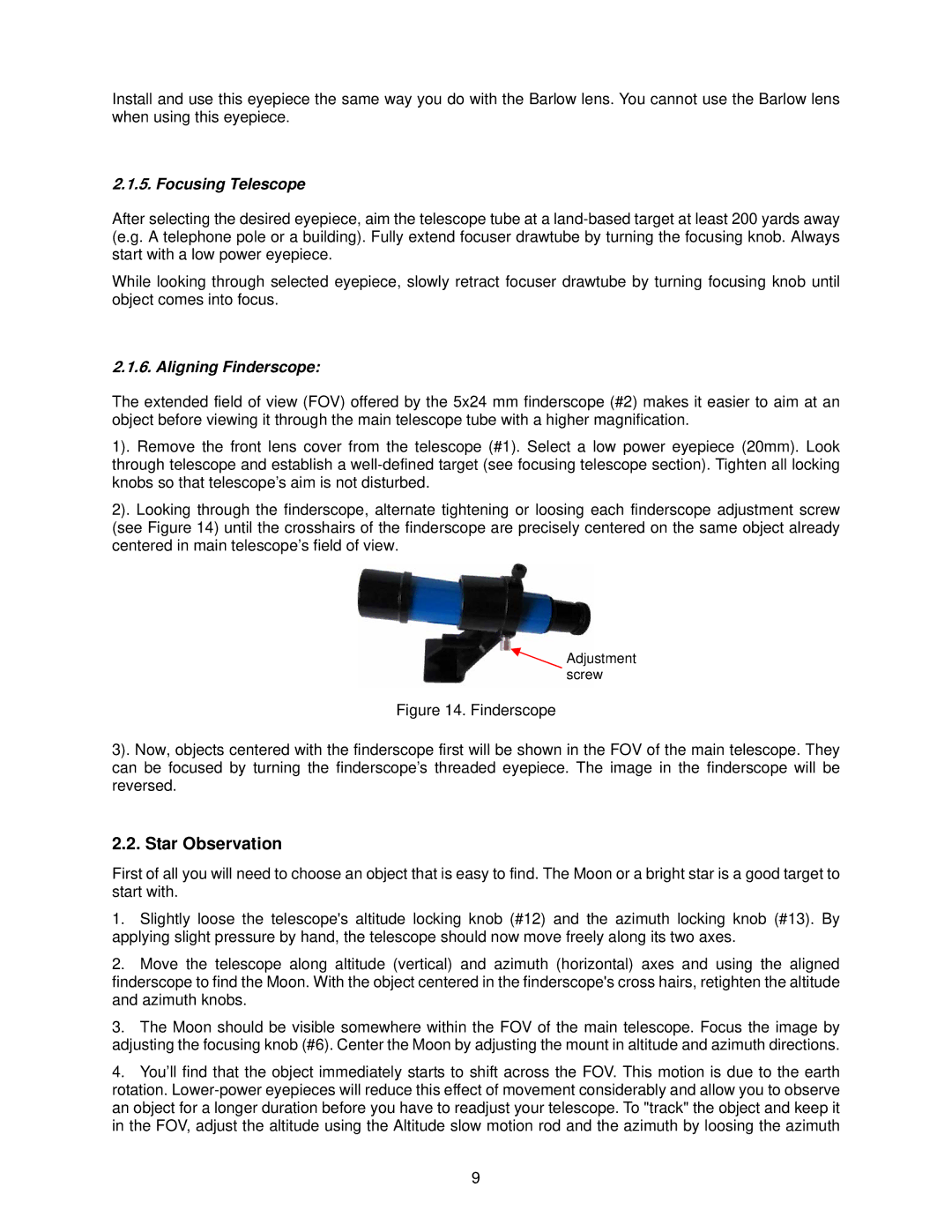70AZ specifications
The iOptron 70AZ is a versatile and user-friendly telescope designed for amateur astronomers and families alike. Boasting a robust 70mm aperture, this telescope strikes an excellent balance between portability and performance, making it an ideal choice for both beginners and those with some experience in stargazing.One of the main features of the iOptron 70AZ is its impressive optics, equipped with fully coated glass lenses. This enhancement reduces light loss and ensures that users get bright, clear images of celestial objects. The telescope's focal ratio of f/10 provides an ideal balance for observing both the planets and a range of deep-sky objects, granting users the flexibility to explore various astronomical phenomena.
The adjustable altazimuth mount is a significant highlight of the iOptron 70AZ. It allows for smooth and easy tracking of celestial objects as they move across the night sky, making it simple for users to locate and follow objects without hassle. The mount is also lightweight yet sturdy, providing a stable platform for observations while ensuring ease of transport.
Another attractive characteristic of the iOptron 70AZ is its uncomplicated setup process, which can be completed in minutes. This is particularly beneficial for families looking to introduce children to astronomy or beginners who may feel overwhelmed by more complex models. Combined with a user-friendly design, the telescope comes with an adjustable tripod that makes it straightforward to achieve the perfect viewing height.
Additionally, the iOptron 70AZ includes two eyepieces, a 20mm for low magnification views and a 4mm for higher magnification. This allows for a wide range of viewing options, from expansive star fields to detailed observations of the Moon and planets. Furthermore, the telescope is equipped with a red dot finder, which simplifies star locating by providing a point of reference against the night sky.
The compact and portable design of the iOptron 70AZ allows users to easily take it on trips or to darker locations away from city lights, enhancing the stargazing experience. With its combination of optics, mount stability, ease of use, and transportability, the iOptron 70AZ stands as an excellent choice for anyone eager to explore the wonders of the universe.

